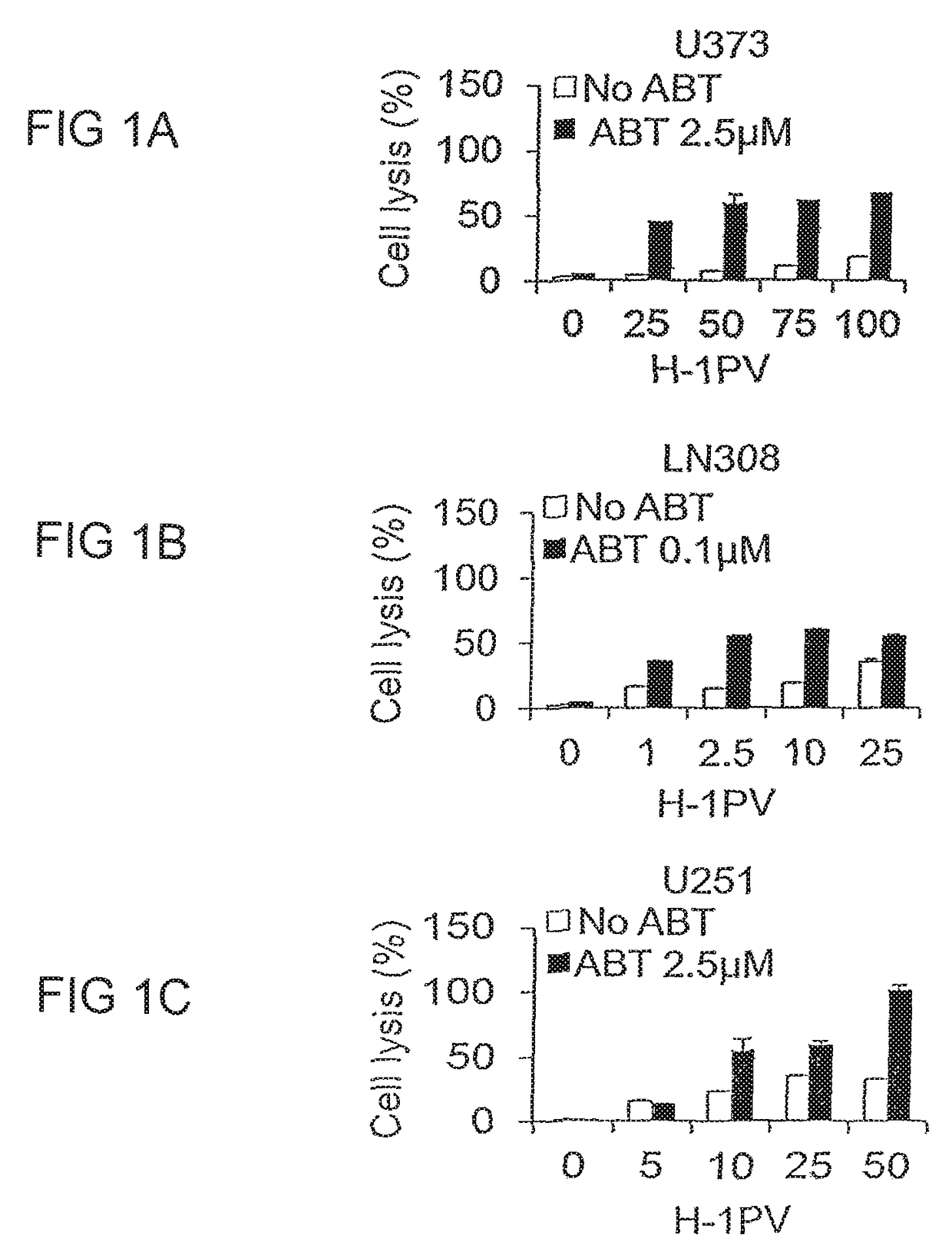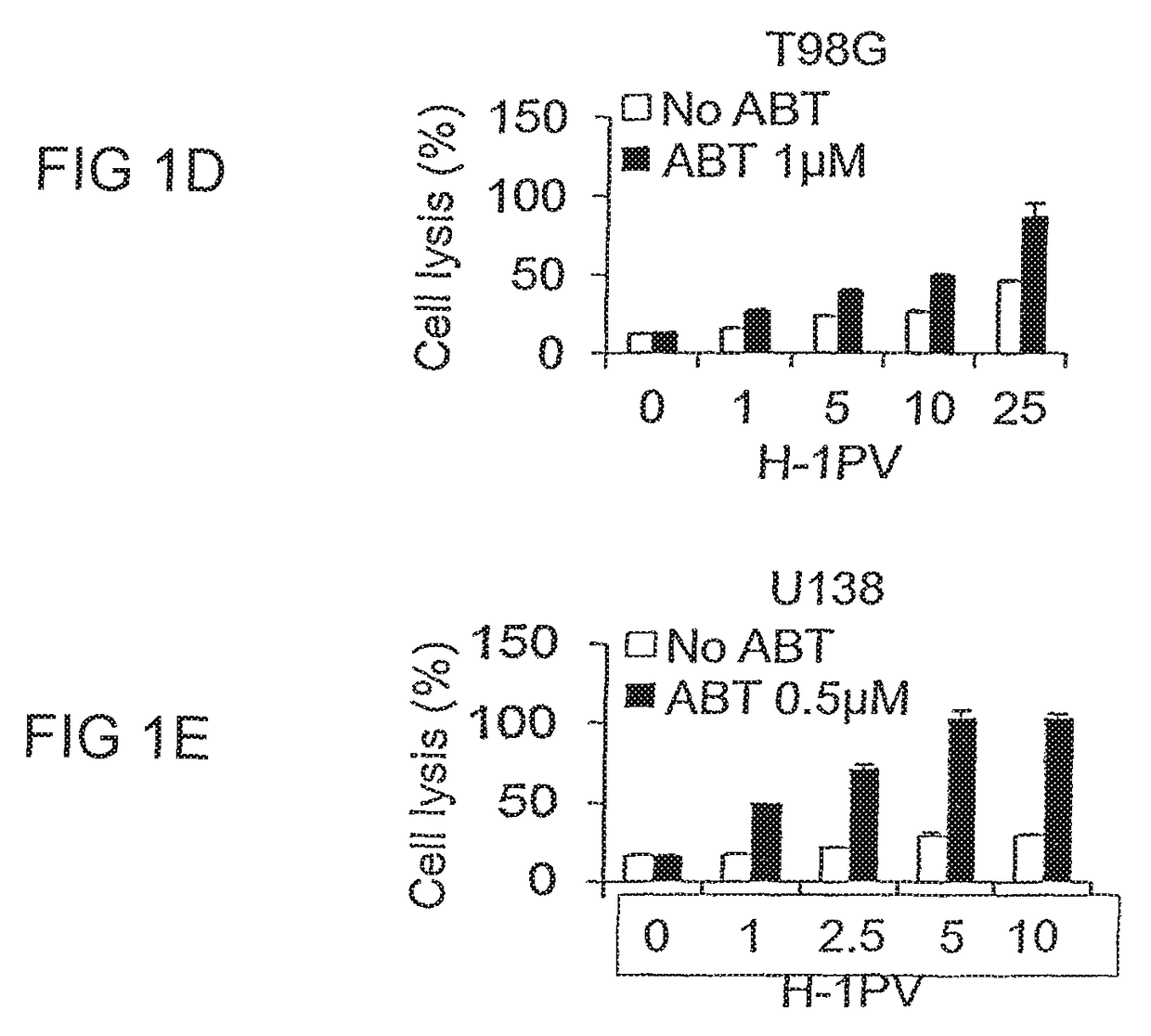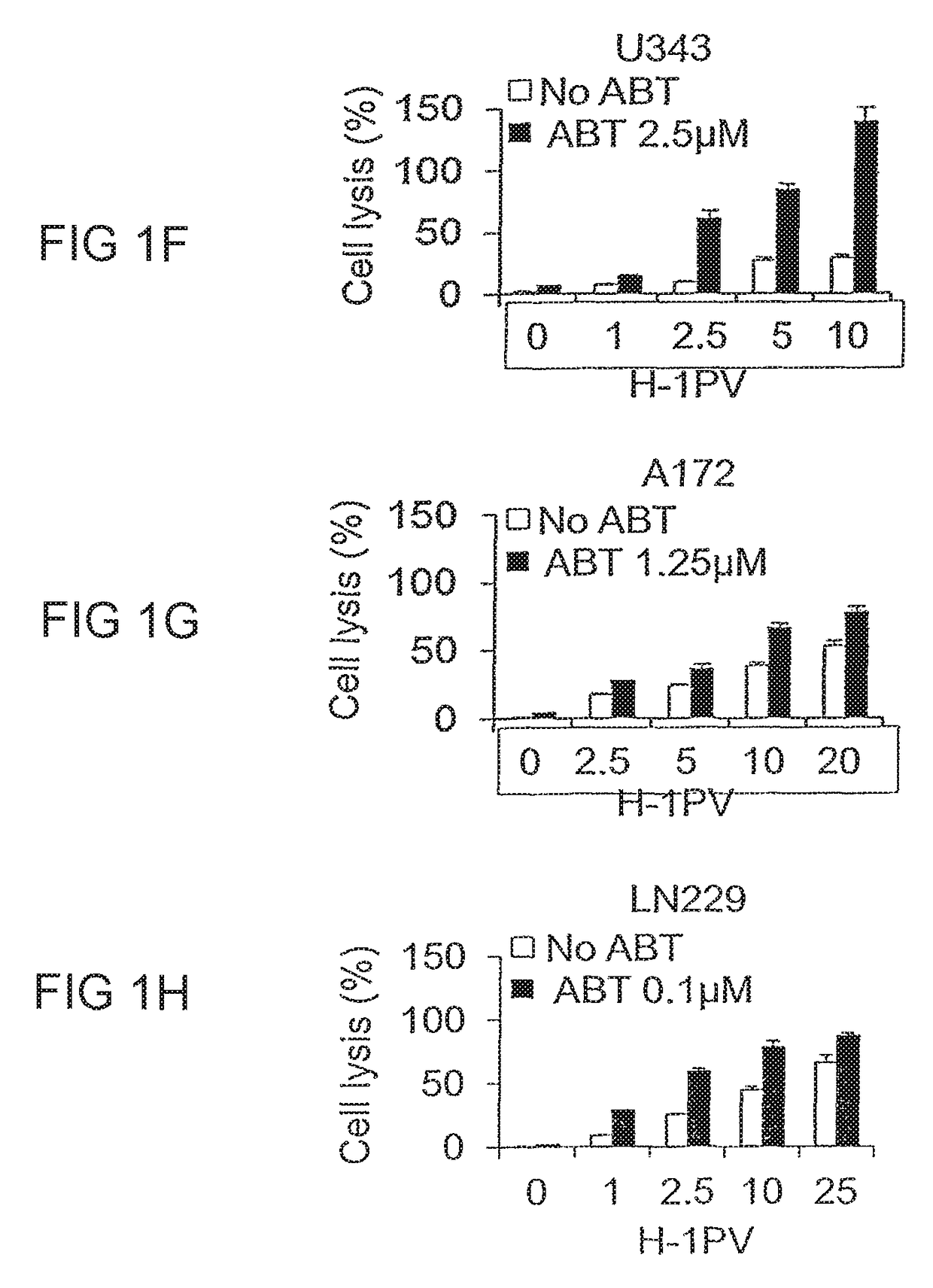Cancer therapy with a parvovirus combined with a Bcl-2 inhibitor
a parvovirus and bcl-2 technology, applied in the direction of drug compositions, viruses/bacteriophages, biochemistry apparatus and processes, etc., can solve the problems of cancer cells often defective in their ability, cancer is also the most costly disease, and already huge economic burden is expected to continue to grow. , to achieve the effect of strong synergistic effect, increased induction of apoptosis, and antagonizing activity
- Summary
- Abstract
- Description
- Claims
- Application Information
AI Technical Summary
Benefits of technology
Problems solved by technology
Method used
Image
Examples
example 1
Materials and Methods
(A) Cell Lines and Culture
[0060]The human glioblastoma-derived cell lines U373, U251, T98G, A172 and U87 were a kind gift of Dr. Iris Augustin (DKFZ, Heidelberg, Germany). U138 and U343 were provided by Tumorbank (DKFZ, Heidelberg, Germany). The glioblastoma-derived cell lines NCH89, NCH82, NCH125 and the gliosarcoma-derived cell line NCH37 were prepared and characterized at the Department of Neurosurgery (Heidelberg, Germany). The HeLa and SiHa cervical carcinoma (CC) cell lines were kindly provided by Prof. Dr. Angel Alonso (DKFZ, Heidelberg, Germany). The CC-derived cell line CaSki and the pancreatic ductal adenocarcinoma (PDAC)-derived cell lines MIA PaCa-2, T3M-4 and AsPC-1 were purchased from ATCC (LGC Standards GmBH, Wesel, Germany). The head and neck squamous cell carcinoma (HNSCC) cell lines HNC97, Ca127, 211MC and human primary oral fibroblasts (POF) and human foreskin fibroblasts (HFF) were a kind gift of Dr. Massimo Tommasino (IARC, Lyon, France). Th...
example 2
ABT-737 Potentiates the Oncolytic Activity of H-1PV in a Synergistic Manner
[0078]It is known that H-1PV can infect human cancer cell lines from different tissues and exerts cytotoxic activities. However, not all cell lines respond at the same level to virus cytotoxicity with some cell lines being very sensitive to the virus while others nearly resistant (El-Andaloussi et al, 2012). Therefore, it would be extremely important to find other anticancer agents that could cooperate with H-1PV in killing cancer cells while preserving the excellent safety profile of the virus. As the cancer cell often features defects in cell death pathways, e.g. overexpression of anti-apoptotic Bcl-2 family members such as Bcl-2, Bcl-XL, Bcl-w and Mcl-1, we hypothesized that these defects may contribute to resistance to H-1PV cytotoxicity and explored whether the use of the Bcl-2 inhibitor ABT-737 in combination with H-1PV may restore apoptotic cell death in cancer cells and result in enhanced therapeutic ...
example 3
H-1PV / ABT-737 Co-Treatment Induces Apoptosis Via Mitochondrial Membrane Permeabilization and Activation of Caspases
[0084]ABT-737 blocks the activity of anti-apoptotic Bcl-2 molecules restoring apoptosis in cancer cells (Cragg et al, 2009). However, to exert cytopathic effects the drug must be used at higher concentrations than those ones used in earlier experiments (Tagscherer et al, 2008). On the other hand it is known that H-1PV may induce multiple cell death programs ranging from apoptosis to necrosis to cathepsin mediated cell death (Nuesch et al, 2012). The ability of H-1PV to induce apoptosis in the presence or absence of ABT-737 was checked in a selection of eight glioma cell lines (U373, U251, U138, U343, A172, NCH37, U87, NCH125) by assessing the occurrence of DNA fragmentation by flow cytometric analysis (detection of the sub-G1 cell population). Untreated or ABT-737 treated cells infected or not with H-1PV were harvested and stained with propidium iodide. At the concentra...
PUM
| Property | Measurement | Unit |
|---|---|---|
| diameter | aaaaa | aaaaa |
| volume | aaaaa | aaaaa |
| time | aaaaa | aaaaa |
Abstract
Description
Claims
Application Information
 Login to View More
Login to View More - R&D
- Intellectual Property
- Life Sciences
- Materials
- Tech Scout
- Unparalleled Data Quality
- Higher Quality Content
- 60% Fewer Hallucinations
Browse by: Latest US Patents, China's latest patents, Technical Efficacy Thesaurus, Application Domain, Technology Topic, Popular Technical Reports.
© 2025 PatSnap. All rights reserved.Legal|Privacy policy|Modern Slavery Act Transparency Statement|Sitemap|About US| Contact US: help@patsnap.com



